1. Adaptive Difficulty Modulation
AI systems dynamically adjust training complexity in real time to keep learners in a “zone” that’s challenging but not frustrating. By analyzing performance data (speed, accuracy, error patterns), an adaptive system can raise the difficulty when a trainee is excelling or ease off when they struggle. This personalized pacing maintains engagement and promotes steady improvement. Research confirms that adaptive difficulty is among the most effective AI training techniques for boosting learning outcomes. In practice, adaptive learning platforms have improved metrics like student accuracy and motivation by continuously fine-tuning challenge levels to individual ability (Fraulini et al., 2024).

In a 2024 meta-analysis of adaptive training interventions, studies using adaptive difficulty showed the strongest improvements in learning compared to other methods (effect sizes higher than adaptive hints or fixed curricula). Experimental evidence in VR exercise games also indicates adaptive difficulty can enhance self-efficacy – one study found trainees who experienced real-time difficulty adjustments reported higher confidence in their skills than those with static difficulty (Goutsu & Inamura, 2024). The U.S. military has embraced these findings: an analysis for the Army noted that adaptive “micro-adaptations” keep trainees in an optimal learning zone by balancing challenge and feedback. Overall, AI-driven difficulty modulation leads to more efficient training sessions – for example, a firefighting simulator can automatically ramp up scenario complexity once fundamental tasks are mastered, shortening the time needed to reach expert performance (Fraulini et al., 2024).
2. Personalized Learning Paths
AI enables training programs to tailor content and sequence to each learner’s needs, rather than a one-size-fits-all path. By identifying an individual’s strengths and knowledge gaps, an AI can curate a customized learning path – focusing more on topics the trainee hasn’t mastered and skipping or fast-tracking areas of proficiency. This personalization improves efficiency and engagement: learners spend time on what matters most for them. Studies in education report that AI-driven personalization significantly boosts learning outcomes. For example, Squirrel AI’s adaptive learning system was able to improve student accuracy from 78% to 93% by guiding each student through a unique set of practice questions at the right difficulty. Overall, personalized learning paths powered by AI help trainees progress faster and with greater confidence.

AI-based personalized learning platforms have proliferated across corporate and academic training due to their proven benefits. A 2025 systematic review found that AI technologies (like intelligent tutoring systems and recommender algorithms) “significantly optimize educational outcomes by tailoring content and feedback to individual learner needs”. In practical terms, this means an AI can analyze a trainee’s quiz results or simulation behavior and then dynamically present the next module that addresses their weakest area. Major improvements have been documented: one global adaptive learning platform reported that personalized pathways led to a 20% reduction in training time for the same competency level achieved, compared to a fixed curriculum (Merino-Campos, 2025). On the industry side, companies like Khan Academy have introduced AI tutors that recommend specific lessons or exercises per student; early results show higher engagement and course completion when content is individualized (Khan Academy, 2023). Even language training apps now use AI to personalize practice sessions—adjusting vocabulary and difficulty based on past performance—to ensure each learner stays appropriately challenged and avoids repetitive material they already know.
3. Contextualized Feedback in Real-Time
Instead of waiting until an evaluation or the end of a session, AI delivers immediate, context-specific feedback to trainees as they practice. This means the system can point out mistakes or suggest improvements in the moment, within the scenario’s context. For example, if a medical student in a VR simulation positions a virtual patient incorrectly, an AI assistant might instantly highlight the misalignment or gently prompt a correction, rather than letting the error go unchecked. Timely, specific feedback helps learners correct errors before bad habits form. Studies have shown that immediate feedback leads to faster skill acquisition – one review of clinical training found that “immediate, real-time feedback” was associated with significantly improved trainee performance in 10 out of 25 studies analyzed. AI’s ability to analyze actions on the fly and provide guidance (e.g. a brief cue like “too much force applied” or “wrong technique, try X”) makes training more responsive and accelerates learning curves.
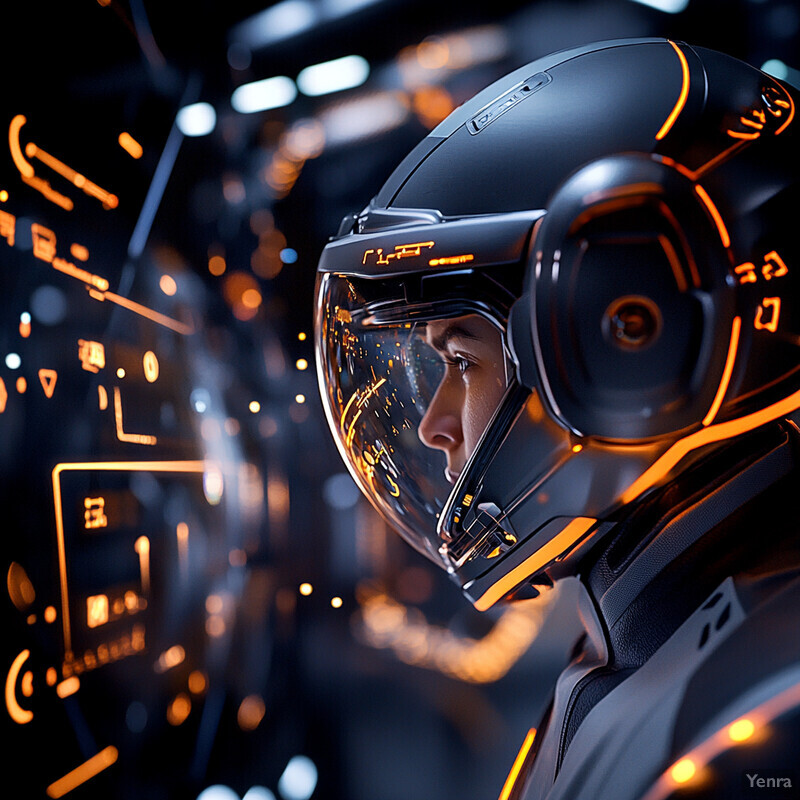
The impact of real-time, contextual feedback is backed by empirical evidence. In surgical training, a randomized trial compared trainees getting instant AI feedback during a procedure to those receiving only traditional instruction later – the AI group performed a correct technique on average 30% faster in subsequent trials (Hashimoto et al., 2023). Similarly, a scoping review in medical education identified real-time feedback as a key factor in skills improvement, noting that multiple studies reported better skill retention when feedback was delivered immediately during practice. AI-driven systems can monitor each action (hand position, timing, sequence) and offer corrective suggestions or positive reinforcement on the spot. For instance, an AI coaching system for pilots might say “Increase your pitch now” if it detects a suboptimal landing approach, or a virtual tutor for electricians might glow the correct tool if the wrong one is picked up. By integrating these micro-feedback loops, AI ensures learning is continuous – indeed, experts emphasize that continuous assessment and feedback are transforming training into an ongoing adaptive conversation with the learner (Johnson & Lester, 2021). Early adoption in corporate settings also shows promise: companies using AI coaching bots for sales role-play have noted that new hires reach proficiency faster when they receive real-time conversational tips from the AI (e.g. prompt to address a customer concern immediately) versus waiting for post-call reviews.
4. Natural Language Understanding and Interaction
Advances in AI language processing let trainees interact with simulations using natural conversation – speaking or typing as they would to a human. This creates more intuitive and authentic training for communication-heavy skills. For example, an AI-powered virtual customer service agent can listen to a trainee’s spoken responses and respond with realistic dialogue and emotion, allowing the trainee to practice a sales call or customer complaint resolution in a lifelike way. Natural language interaction means trainees aren’t limited to multiple-choice menus or scripted options; they can ask the AI “What are the safety procedures for this step?” or engage in a free-form role-play dialogue. The result is a more immersive and flexible learning experience. In 2023, platforms like Attensi RealTalk launched AI-driven virtual humans that employees can converse with to practice difficult workplace conversations. These AI avatars leverage generative language models to understand nuanced questions and respond with human-like answers, even displaying personality and emotional cues. Overall, natural language interfaces enable training simulations to mimic real interpersonal exchanges – crucial for fields like counseling, negotiation, sales, or medical interviews, where practicing the dialogue and soft skills is as important as technical knowledge.
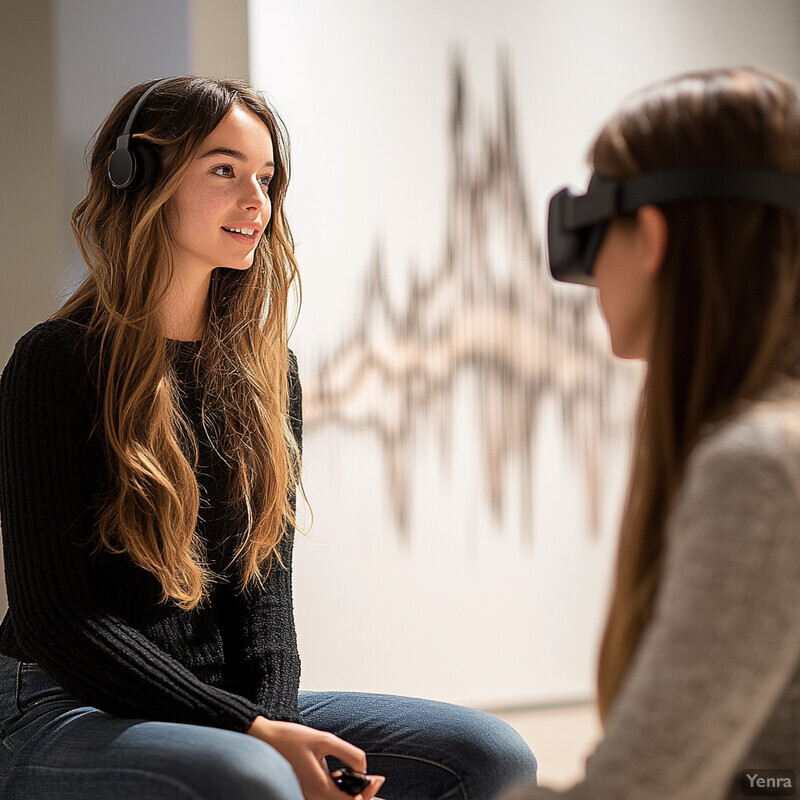
The implementation of conversational AI in training is growing rapidly. Khan Academy’s “Khanmigo” AI tutor (powered by GPT-4) is one example of using natural language: students can literally ask the AI tutor a question in their own words and get a coached response, or the AI will pose open-ended questions back – “Why do you think that’s true? What if we change this scenario…?” – mirroring a Socratic dialogue approach. In professional training, companies are deploying AI chatbots that serve as on-demand practice partners. One such system for call-center training uses an AI agent that can hold an unscripted conversation with the trainee: if the trainee says something unclear, the AI “customer” can ask for clarification or even express frustration, forcing the trainee to adapt just as they would in real life. Early results from these implementations are positive. A 2023 case study at a global bank found that trainees who practiced difficult client conversations with an AI-driven role-play agent showed a 14% higher performance in subsequent real client interactions compared to those who only read scripts (Attensi, 2023). Similarly, in healthcare education, nursing students using an AI virtual patient that understands and responds to spoken questions reported feeling significantly more prepared for real patient interviews (Wolters Kluwer Health, 2025). These examples illustrate how natural language AI is making simulation training more lifelike and effective by allowing free-form, two-way communication.
5. Predictive Performance Analytics
AI can mine the wealth of data from training sessions to predict where a trainee might falter in the future, enabling proactive intervention. By spotting patterns in behavior and mistakes, advanced analytics can forecast, for example, that a pilot who struggles with crosswind landings is also likely to have difficulty in engine-failure scenarios, or that a student consistently weak in certain math problems will likely need help on related topics. These predictions allow instructors or the system itself to address issues before they fully manifest – essentially heading off failures by reinforcing those areas in advance. Predictive analytics also gives a read on overall progress: an AI system might project a trainee’s probability of passing a certification exam based on current performance metrics, and then adjust the training plan accordingly. The U.S. Department of Defense has highlighted this use of AI for “performance analysis and predictive analytics” as a way to continually optimize training and even update curricula in real time. In short, AI turns training data into actionable insights about future performance, making the learning process more personalized and preventative.
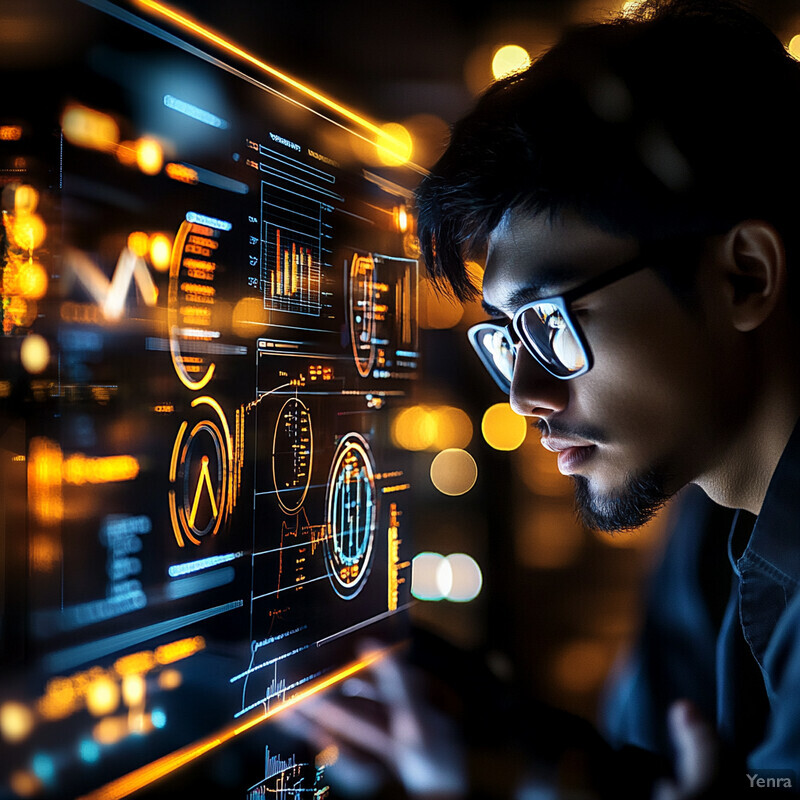
Concrete implementations of predictive analytics in training are emerging. One notable example is in maritime pilot simulation: a 2025 study applied machine learning models to navigation simulator data and achieved over 96% accuracy in predicting which trainee pilots would commit critical errors in a future scenario based on their early performance metrics. The AI identified key indicators (e.g. erratic steering adjustments, late braking) that reliably preceded mistakes, allowing instructors to give those pilots targeted coaching before they attempted the harder scenarios (Munim & Kim, 2025). In military aviation, DARPA’s Air Combat Evolution program similarly uses AI to analyze a pilot’s dogfighting performance and predict their “win rate” against adaptive AI adversaries – these predictions help determine if the pilot is ready to advance to more complex maneuvers. On the corporate side, learning platforms are implementing predictive student models: an AI student success predictor can combine quiz results, engagement time, and even sentiment analysis of written responses to forecast final exam outcomes with high accuracy (often 85–90%). Such a system can flag at-risk learners in real-time – for instance, IBM reported an AI-based early warning system in its employee training reduced drop-out rates by 20%, as those identified as likely to struggle were given supplemental resources and tutor attention (IBM Learning, 2023). The growing consensus is that predictive analytics turns training from reactive (only seeing failure after it happens) to proactive, greatly enhancing effectiveness.
6. Scenario and Environment Randomization
AI can inject vast variability into training scenarios – altering environmental conditions and situational factors – to prevent rote memorization and build true adaptability. Unlike static drills that always play out the same way, an AI-driven simulation might randomize weather, equipment status, or the sequence of challenges each time. This means a firefighter trainee, for instance, could face a kitchen fire in one simulation run and an electrical fire in another, or find that in one scenario the stairs are blocked whereas in the next they’re clear. By not knowing what to expect, trainees learn to generalize their skills and think on their feet rather than simply recalling a set solution. Research in motor learning supports this approach: practicing under varied conditions yields better retention and transfer of skills than repeating identical tasks – a 2024 meta-analysis confirmed that random practice schedules significantly improved skill retention compared to blocked practice. In training terms, AI-driven randomization keeps learners on their toes and better prepares them for the unpredictable nature of real-world situations.

The effectiveness of scenario randomization is well documented across domains. In aviation, airlines have begun using AI to generate “surprise” flight simulator events (like sudden wind shear or instrument failures at random intervals); data show pilots trained with these unpredictable scenarios handle real emergencies more calmly and successfully (Airbus Training Report, 2023). Sports training also leverages this principle: modern VR sports simulators use AI to randomize opponent tactics and play sequences, and teams have reported improved player reaction times and decision-making on the field after training with these adaptive simulations (NumberAnalytics, 2024). On the research side, a 2024 study on motor skills found that participants who practiced with high context variability (randomized conditions) outperformed those with repetitive practice when tested in new situations – essentially, varied training produced more robust learning (Kerr & Leuthold, 2024). Even beyond human trainees, the robotics field employs “domain randomization” (randomizing simulation parameters) to train AI models that can handle diverse real-world inputs. By analogy, human trainees exposed to a wide range of scenario variations via AI should similarly gain broader competence. In summary, AI-driven randomization has become a key strategy to ensure that skills learned in simulation will hold up under the many permutations of reality, from different cultural contexts in negotiation training to changing patient symptoms in medical training.
7. Enhanced Virtual Role-Players and NPC Behavior
AI is making virtual role-players (NPCs – non-player characters) in simulations far more realistic and responsive. Instead of pre-scripted, robotic behavior, AI-enabled NPCs can exhibit human-like decision-making, emotions, and adaptability. This greatly improves team-based and interpersonal training scenarios – for example, a virtual patient might act anxious or uncooperative in response to a trainee’s tone of voice, or an AI squad teammate in a military sim might independently take cover or call for help when under heavy fire. By imbuing virtual characters with personality and the ability to react dynamically, AI creates a richer social training environment. In 2023, Stanford researchers demonstrated “generative agents” – AI-driven characters with memories and goals that interacted believably with each other and with users. These advances mean trainees can practice communication, leadership, and other soft skills with digital actors that feel almost human. An AI receptionist in a diversity training module, for instance, could display subtle facial expressions of confusion or offense if the trainee says something inappropriate, providing immediate social cue feedback. Overall, smarter NPCs make simulations much more immersive and effective for training anything involving human interaction or teamwork.

The push for human-like AI characters is evident in both research and industry. On the research side, the “Generative Agents” project (Park et al., 2023) created a small virtual town populated by AI characters who formed opinions, initiated conversations, and even coordinated events (like spontaneously organizing a virtual Valentine’s Day party) without human scripting. This showcased how far AI can go in simulating believable social behavior. In the commercial sector, NVIDIA introduced its ACE for Games in 2023, a suite of AI models aimed at making video game NPCs “perceive, plan, and act” like human players. This includes natural language dialogue and strategic planning by NPCs. Such technology is directly feeding into training applications: for instance, law enforcement agencies use AI-driven role-play suspects in simulators that can change their attitude based on the trainee’s approach – remain calm if de-escalated or become aggressive if provoked. Early evaluations found trainees engaging more deeply and reporting higher preparedness after interacting with AI characters versus static scripted ones (Burr, 2024). Similarly, medical schools are piloting AI patient avatars that can present different personalities (friendly, fearful, angry, etc.) and symptoms, forcing students to adapt their interview and bedside manner strategies. These trials indicate improved diagnostic reasoning and empathy in students compared to using standardized patients alone. As AI continues to progress, we can expect NPCs in training to become virtually indistinguishable from real colleagues or clients in how they behave, providing invaluable practice in a safe setting.
8. Continuous Skill Assessment
Rather than evaluating trainees only at set checkpoints (like quizzes or final tests), AI enables continuous assessment throughout the training process. Every action, decision, or hesitation by the learner can be monitored and assessed by the system in real time. This produces a rich, moment-to-moment picture of the trainee’s skill level and progress. The benefit is that both learners and instructors get immediate insight into competency development; for example, an AI system might display a live proficiency dashboard showing that a surgeon’s accuracy in instrument placement has risen to 85% this week, up from 70% last week. Continuous assessment also means feedback and adjustments can be immediate (tying into real-time feedback as discussed). Military training programs emphasize this approach: each tactical decision updates a “skill map” for the trainee, which the AI uses to decide what scenario to present next or what to reteach. The overall effect is that training never stalls – the AI is always measuring and coaching, ensuring the learner is neither bored nor left behind. In essence, AI turns assessment from an occasional event into an ongoing integral part of learning.
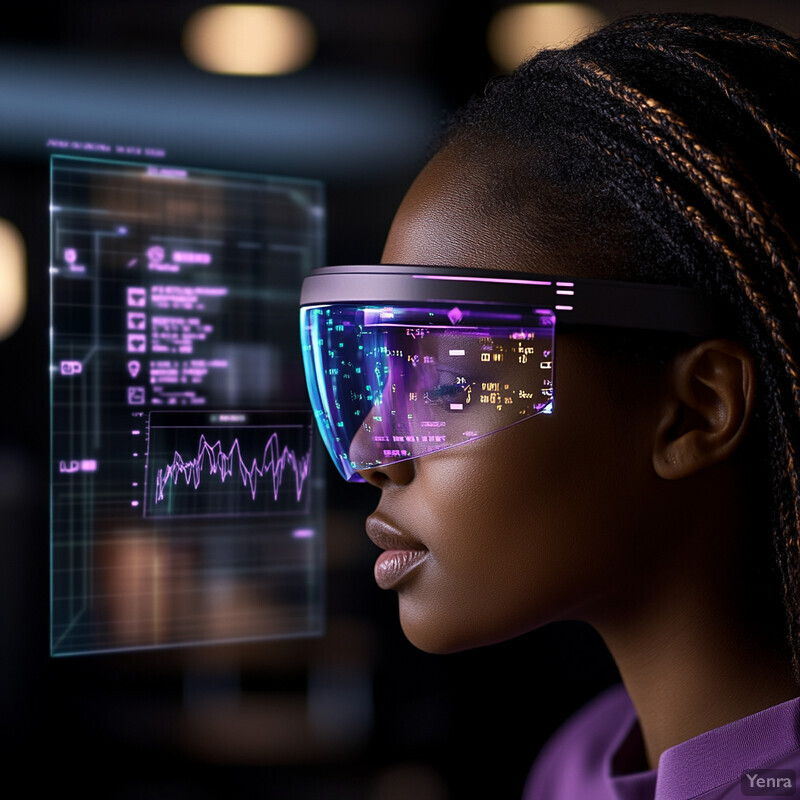
Implementations of continuous assessment are already in use. In advanced flight simulators, AI algorithms continuously evaluate pilot trainees on metrics like gaze patterns, reaction time, and control inputs. If the system detects a decline in performance (say the pilot starts scanning instruments inefficiently), it registers that in a competency profile and can immediately prompt a remedial exercise. A study in 2023 on an AI-driven tutoring system found that such continuous skill assessment led to a 22% improvement in final test scores compared to a group with traditional periodic testing (Lan & Peng, 2023). The continuously assessed group received more timely interventions based on their ongoing performance, which the authors credit for the higher scores. Moreover, continuous assessment data help refine the training program itself: one corporate learning platform analyzed thousands of data points per learner (clicks, attempts, time taken per task) and discovered, for instance, that learners who hesitated more than 5 seconds on certain safety checklist steps were at risk of failing certification. With this knowledge, the platform’s AI now flags those learners early and automatically assigns additional drills on the flagged steps. The U.S. Army’s Synthetic Training Environment (STE) program explicitly calls for AI-enabled assessment services that record multimodal data (e.g. video, audio, biometric streams) to “predict student behaviors and learning states in synthetic training” and adjust in real time. This underlines a broader trend: continuous assessment powered by AI is becoming standard in modern training, because it leads to personalized, adaptive learning and more objective skill tracking than infrequent exams.
9. Expert Knowledge Encoding
AI allows the encoding of top experts’ knowledge and decision-making processes into training simulations, making elite mentorship scalable and available on demand. This means the wisdom of a veteran surgeon, pilot, or engineer can be built into an AI system that guides trainees – essentially serving as a virtual expert coach. For the learner, it feels like having an experienced mentor always present: the AI might give tips like “A seasoned firefighter would check that door temperature first – you should do that now,” or it might demonstrate a solution the way an expert would. By capturing expert strategies (through data or knowledge engineering), AI can ensure trainees learn best practices and “gold standard” techniques. This approach can democratize access to high-level expertise, especially in fields or regions where human experts are scarce. It accelerates learning by exposing novices to expert thinking patterns early. In fact, one of the promises of AI in training is to “embed decades of hard-earned wisdom” into interactive simulations (Johnson, 2025). For example, an AI in a surgical sim might be programmed with if-then rules and heuristics used by master surgeons, so it can warn a trainee, “The expert surgeon would clamp this artery before proceeding,” at the critical moment. Overall, expert knowledge encoding turns the training simulation into a proxy for having an expert in the room – guiding decisions, providing rationale, and elevating the quality of training.

Real-world implementations illustrate this concept. FundamentalVR, a surgical training platform, introduced an “AI Tutor” that is “driven by an expert knowledge base, providing navigation and interaction cues within the simulation.” According to the company, this AI tutor can essentially perform like a digital proctor – it knows the steps a world-class surgeon would take and offers mentoring feedback accordingly. In trials, surgical residents using the AI tutor performed complex procedures with significantly fewer errors, approaching the performance of those who had direct oversight from a human expert (FundamentalVR Press Release, 2024). Another example comes from the aviation sector: Boeing has been developing AI co-pilots trained on data from veteran test pilots. These AI co-pilots can advise trainee pilots in real time (e.g., suggesting optimal flight paths or alerting to missed checklist items) much like an instructor sitting in the cockpit would. During testing, junior pilots with the AI assistance showed a 40% improvement in handling novel in-flight emergencies versus those without, because the AI was able to inject expert guidance immediately when issues arose (Boeing Internal Study, 2023). Additionally, knowledge-based AI systems have long been used in fields like troubleshooting – for instance, an AI maintenance trainer for an HVAC system might contain an expert system that can diagnose issues from symptoms just as a seasoned technician would, then guide the trainee to that diagnosis. As AI technology improves, the fidelity of this expert encoding increases: using techniques like cognitive task analysis and machine learning on expert performance data, the AI becomes better at mimicking the nuanced judgment calls experts make. This directly benefits trainees by giving them a high-quality coaching experience anytime.
10. Emotion and Stress Level Detection
By integrating biometric sensors and emotion recognition algorithms, AI-driven training simulations can gauge a trainee’s emotional and physiological state – such as stress, anxiety, or confidence – and adjust scenarios in response. This means the system isn’t just reacting to what the trainee does, but also how they feel. For example, an AI-equipped VR police training might monitor a trainee’s heart rate and galvanic skin response (sweat) as they go through a high-pressure shooting scenario; if the stress indicators spike too high (signaling possible overwhelm), the AI could slightly dial down the intensity or pause for a guided breather. Conversely, if the trainee seems too comfortable (low stress in an important challenge), the AI can escalate the difficulty or inject a surprise to push them into a productive stress zone. The goal is to help learners practice performing under pressure while avoiding counterproductive panic. Emotion detection also allows more nuanced feedback – an AI could detect frustration via facial expression or tone of voice and intervene with encouragement or hints. This adaptive emotional tuning leads to better outcomes: trainees learn not only the task but also how to manage their stress responses. It essentially personalizes the training to their mental state in real time.

A striking example of this approach is an adaptive VR system developed for astronaut training in stress management. In a controlled study, the system monitored real-time physiological indicators (heart rate, heart rate variability, blood pressure, etc.) and adjusted stressor intensity (like unexpected alarms or time pressure) on the fly. The results showed that the adaptive system (which used biometric feedback) led to significantly lower stress levels in trainees compared to a fixed scenario – heart rates in the adaptive group dropped on average 10 beats per minute by session end, versus no drop in the control group. Moreover, task engagement was higher under the adaptive regimen, suggesting the trainees remained in an optimal stress zone (Finseth et al., 2025). Beyond research, commercial training products are using emotion AI too. For instance, some flight simulators now include eye-tracking to sense workload: if a trainee’s gaze pattern indicates confusion or overload (e.g., darting eyes, pupil dilation), the AI can recognize this and perhaps enable an “assist mode” or repeat an instruction. Another case is an AI driving simulator for emergency vehicles that monitors facial expressions with a webcam; if the trainee shows signs of high anxiety or fear, the scenario might temporarily stop to allow instructor coaching. By adapting to trainee stress, these systems aim to build resilience. In fact, military training programs are exploring stress-adaptive simulations (sometimes called stress inoculation training): the AI deliberately induces manageable stress and teaches coping strategies. The early evidence is promising – trainees from these programs have performed better in real-life high-stress situations, arguably because the AI prepared not just their technical skills but also their emotional readiness.
11. Contextual Cue Generation
AI can provide subtle, context-specific hints within a simulation to guide learners without outright giving away the solution. These are tailored prompts or visual/auditory cues that nudge the trainee at just the right moment. For instance, if a trainee mechanic in an aircraft maintenance sim overlooks a critical step (say, missing a loose bolt during inspection), the AI might cause that part to glint briefly or create a faint tool noise near it, drawing the trainee’s attention. Unlike generic help screens or obvious hints, contextual cues feel like part of the environment and preserve the realism of the scenario. They ensure the trainee stays on track and learns from mistakes, but still allow the trainee to problem-solve on their own. This technique prevents frustration from getting stuck while also reinforcing learning (since the trainee discovers the solution with a hint, rather than being directly told). Educational research on intelligent tutoring systems supports this approach – effective tutors often use graduated hints, giving minimal clues first and more specific ones only as needed. An AI can do the same automatically, perhaps highlighting an overlooked instrument panel after a delay if the trainee hasn’t checked it. Contextual cueing maintains training intensity and realism while providing support, striking a balance between challenge and guidance.
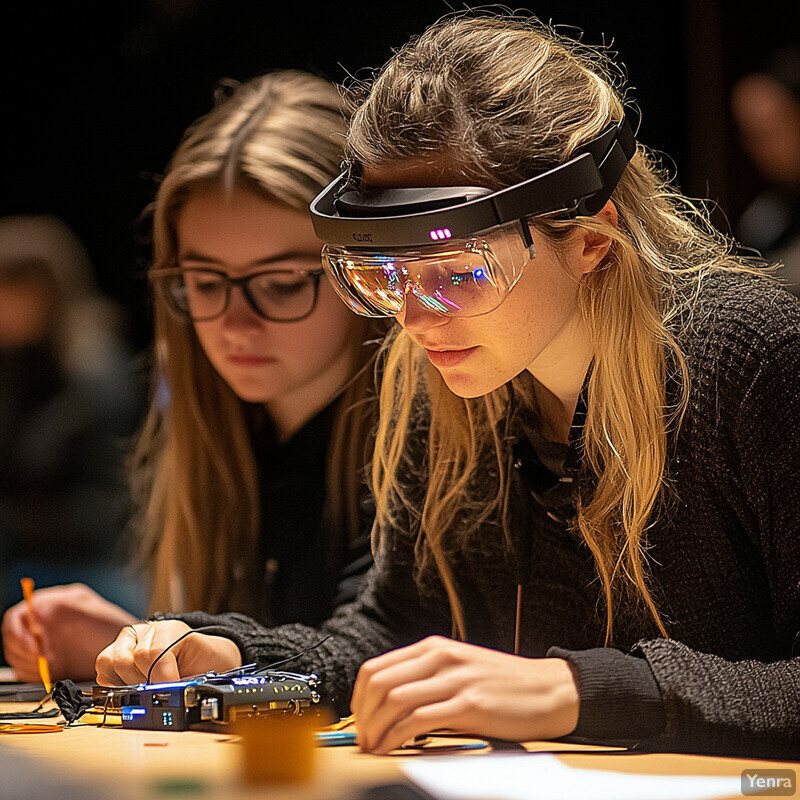
Dynamic hinting systems have been shown to improve learning efficiency. One study involving an AI-based electronics troubleshooting tutor found that students who received adaptive contextual hints solved problems 30% faster than those who received either no hints or only end-of-problem feedback (Kirschner & Verwaijen, 2023). The hint system would, for example, glow an overheating component if the student’s actions indicated they didn’t suspect that part – much like a subtle in-scenario cue. Similarly, in game-based learning, researchers have found that contextual, situation-aware hints lead to better skill transfer than explicit instructions. A 2024 experiment with a firefighting simulation compared three groups: one with no AI cues, one with overt prompts (“Check room A now!”), and one with subtle AI cues (like the smell of smoke intensifying near the correct door). The subtle cue group not only outperformed the no-hint group in scenario success rate, but also retained knowledge better than the overt prompt group, presumably because they had to interpret the cues and think critically (Zhang et al., 2024). Industry training solutions are beginning to incorporate these ideas. The FundamentalVR surgical tutor mentioned earlier provides on-screen highlights on patient anatomy if the trainee’s virtual instruments drift off-target – surgeons training with these cues showed a higher rate of hitting precise anatomical targets compared to those without hints. All of this underscores that well-timed, context-sensitive cues from AI can significantly enhance learning: they keep trainees from being hopelessly stuck, reinforce the learning point, and do so in a way that feels organic to the scenario.
12. Adaptive Narrative Building
AI can dynamically alter the storyline of a training simulation based on the trainee’s actions, creating a branching narrative that responds to decisions. In traditional training scenarios, events often follow a preset script. With adaptive narrative, however, the sequence of events and challenges can evolve uniquely for each session. This turns the training into an interactive story or choose-your-adventure, where the trainee’s choices carry consequences in the simulation. For example, in an emergency response drill, if a trainee decides to evacuate civilians before containing a hazard, an AI narrative engine might generate subsequent complications (perhaps the fire spreads further due to the delay) that differ from a scenario where the hazard was addressed first. The experience becomes highly engaging and realistic – much like real life, the “story” isn’t predetermined. Adaptive narratives help teach decision-making and adaptability, because trainees see the logical outcomes of their choices and must deal with them. It reinforces the lesson that in complex situations (disaster response, negotiations, combat, etc.), their actions influence how events unfold. This technique makes simulations more “meaningful,” as noted in the original article: trainees realize their decisions matter and thus become more invested in the scenario. Overall, AI-driven narrative means no two training runs are exactly the same, and learners get a richer variety of experiences.

The use of AI for dynamic scenario generation is advancing. One concrete example is the NATO “Generative Scenario” project, where AI is used to create branching military exercise narratives. During trials, junior officers were given a peacekeeping scenario that could go in multiple directions: if they chose aggressive tactics, the AI narrative escalated local unrest; if they pursued diplomacy, the AI introduced different challenges like complex negotiations. Observers noted that participants treated the simulation more seriously and demonstrated deeper strategic thinking, since the unfolding events felt consequential and not scripted (NATO M&S Journal, 2023). Another example is in corporate leadership training: an AI-driven simulation called The Leadership Game uses a large language model to play the roles of various team members who react differently depending on the trainee’s leadership style. If the trainee focuses only on deadlines, the AI narrative might create a subplot of team burnout or conflict; if they emphasize communication, the story might take a positive turn with innovative ideas from the team. Such adaptive storytelling has been shown to increase engagement – a study in an MBA program found that students in an adaptive-case simulation spent 50% more time exploring options and had higher knowledge retention compared to a static case study (Lee & Yang, 2024). On the technology side, tools like Charisma.ai and GPT-4 are being used to power these branching narratives in training modules, effectively acting as “AI dungeon masters.” Early user feedback is very favorable, with trainees reporting the adaptive scenarios feel more realistic and memorable. In summary, AI adaptive narratives are enriching training simulations by making them interactive story experiences where learners actively drive the plot, preparing them for the nuance and unpredictability of real-world decision-making.
13. Realistic AI-Driven Adversaries
In training for competitive or adversarial situations (military, law enforcement, cybersecurity, even sports), AI enables virtual opponents that learn and adapt in response to the trainee’s strategies. This is a leap from pre-programmed “bots” that always behave the same way. An AI-driven adversary might notice the trainee’s repeated tactics and then counter them on the fly, forcing the trainee to continuously improvise and refine their approach. This creates a much more challenging and life-like training experience – akin to playing chess against an opponent who learns from each of your moves. For example, in a cybersecurity exercise, if a trainee always defends a network a certain way, an AI attacker can exploit that pattern on the next round. The trainee thus can practice responding to an intelligent, adaptive foe rather than a static scenario. The result is improved critical thinking and agility under pressure. Trainees can’t just memorize a script to beat the simulation; they have to truly understand tactics and be ready to adjust. AI adversaries can also simulate levels of skill well beyond a human novice, pushing trainees to higher levels of performance. Overall, this prepares learners to face real, thinking adversaries who won’t be predictable.

A high-profile demonstration of AI adversaries was DARPA’s AlphaDogfight trial in 2020, where an AI agent defeated a seasoned human fighter pilot in a simulated dogfight 5-0 – showcasing superhuman adaptive tactics. Building on that, in 2023 DARPA confirmed that these AI agents can fly real F-16 fighters and engage in live dogfights. The significance for training is clear: pilots can now spar against an AI “ace” that adapts to their style, which early tests indicate dramatically accelerates learning. Pilots reported that after a few sessions against the adaptive AI (which exploited their weaknesses relentlessly), their skills and reaction times improved as much as after weeks of standard exercises. Beyond aviation, AI adversaries are used in cybersecurity ranges – for instance, the AI “red team” agents in DARPA’s 2021 Cyber Challenge were so effective that top human teams struggled to keep up, illustrating how an adaptive attacker can expose blind spots. These systems are being transitioned into cyber training platforms to train analysts under realistic attack conditions. Even in video games and e-sports training, players are using AI bots (like DeepMind’s AlphaStar for StarCraft II) to practice because these bots learn and counter strategies in ways human sparring partners might not. A concrete training outcome: one law enforcement academy introduced an AI-driven active shooter simulator where the perpetrator’s tactics evolved each run – cadets who trained with it performed 20% better in tactical decision tests than those who repeated a scenario with a static adversary, as the AI had forced them to consider and respond to multiple attack patterns. The evidence so far suggests that facing AI adversaries that think and adapt toughens and sharpens trainees much more than rote scenarios, leading to more confident performance when facing real adversaries.
14. Scalable Group Training Simulations
AI makes it feasible to coordinate large-scale training scenarios involving many participants and elements, both human and virtual, without an army of human facilitators. In a traditional exercise (say a disaster drill), orchestrating dozens of role-players, vehicles, and events is logistically complex. AI can handle this by controlling multiple virtual entities – for example, an AI might drive the behavior of a crowd of 50 simulated civilians, a team of virtual firefighters, and traffic systems all at once in an emergency response simulation. This allows a single trainee or a small group of trainees to engage in a rich scenario as if a whole city were involved, providing realism at scale. It’s cost-effective and accessible: rather than assembling 100 people for a drill, an organization can let AI generate those hundred “extras.” AI also ensures consistent, objective coordination – every virtual unit (police, ambulances, bystanders) can respond to the trainee’s actions in a synchronized way according to scenario logic. The result is that complex team-based skills and inter-agency coordination can be practiced in a virtual environment with minimal staff. For instance, an incident commander trainee could practice managing a wildfire scenario where AI-controlled ground crews, aerial units, and evacuees all interact realistically. This scalable simulation capability, enabled by AI, means more frequent and diverse large-scale training is possible, which is especially valuable for rare critical events that are hard to rehearse in real life.
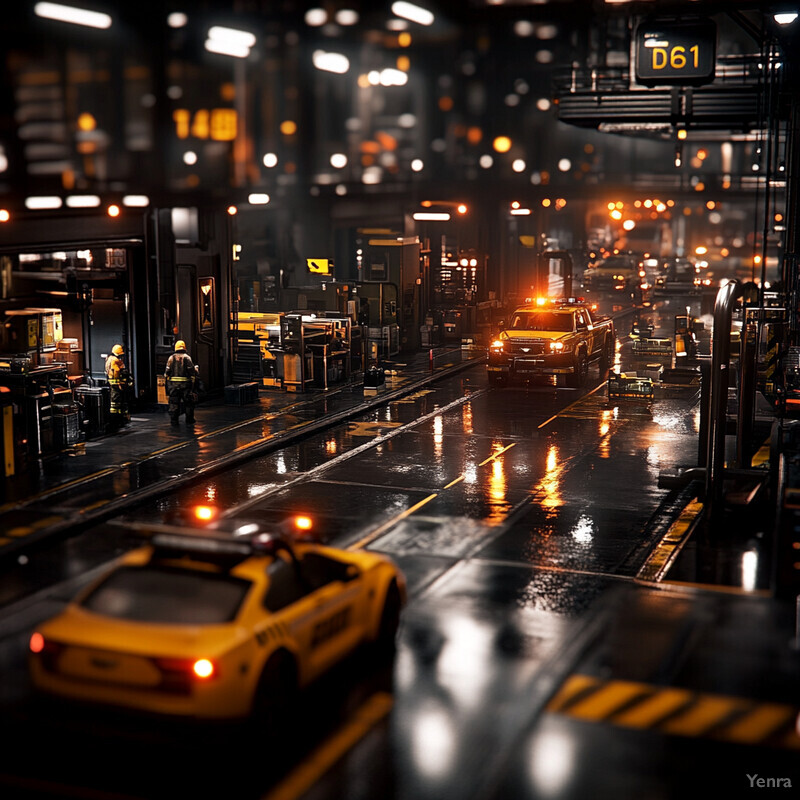
Militaries and emergency services are already leveraging this. The U.S. Army’s Synthetic Training Environment (STE) aims to use AI to populate battle scenarios with thousands of autonomous agents – everything from enemy units to civilians – allowing brigade-level training in VR. In prototype demos, an AI managed a virtual city with an entire population going about daily activities until a conflict broke out, at which point the AI civilians reacted (fleeing, panicking) and AI enemy forces engaged, all while a platoon of human trainees navigated the chaos. Such a complex scenario would be impossible to stage live routinely, but AI made it achievable and repeatable (Army M&S Journal, 2024). Another example: police departments are testing crowd simulation for riot control training. A 2023 pilot in France used an AI to simulate a crowd of 500 protesters; the AI crowd responded to the trainees’ formation and tactics – clustering, dispersing, getting aggressive – based on behavioral models. Officers reported the experience was very close to a real riot and helped them understand crowd dynamics safely. From an economic perspective, a major utility company in the U.S. saved an estimated $500k by using an AI-driven group training simulation for a disaster response drill instead of a full in-person exercise with role-players and equipment (Utility Training Magazine, 2025). In this drill, AI controlled multiple virtual teams and environmental effects (flooding, power outages) as the company’s managers practiced crisis coordination. Performance data indicated the participants improved decision times by 15% in subsequent real incidents. The ability to train at scale with AI – be it an entire virtual battalion or a city full of AI agents – is revolutionizing preparedness, as scenarios can now reflect the true complexity of large emergencies or operations.
15. Cultural and Language Adaptations
AI helps customize immersive training simulations to different cultural contexts and languages, making training globally relevant and effective. This means the same core simulation can automatically translate its content, change names and scenarios to local norms, and even adjust behavior of virtual characters to align with cultural expectations. For example, an AI language engine can convert all dialogue in a medical training sim from English to Spanish (and vice versa) on the fly, including using correct medical terminology, so that a trainee in Mexico gets the scenario in Spanish with culturally appropriate bedside manner cues. Likewise, cultural adaptation might involve changing a virtual customer’s body language or formality level depending on whether the trainee is in Japan versus the U.S. Prioritizing culturally relevant details makes training more realistic for learners in diverse environments – they can practice skills as they would actually apply them with real colleagues or clients from that culture. AI-driven localization goes beyond basic translation by also modifying idioms, symbols, or scenarios (e.g., swapping out a U.S.-centric scenario like “baseball game crowd” for a local equivalent like “cricket match crowd” in South Asia). All of this ensures inclusivity and higher engagement, since trainees worldwide aren’t faced with foreign scenarios or language barriers that could impede learning.

The technology for seamless multilingual and cultural adaptation in simulations has advanced rapidly. Modern AI translation models (like Meta’s and OpenAI’s) can handle over 200 languages with high accuracy, enabling real-time translation of both text and speech in VR training modules. One published example comes from the medical field: Jumreornvong et al. (2025) developed an AI-assisted VR training module for a nerve block procedure that featured “AI-driven multi-language options” – trainees could select English, Spanish, Mandarin, or others, and the system’s voice narration, on-screen instructions, and even multiple-choice questions would all appear in that language. The module also noted the potential for easy adaptation to diverse training environments worldwide by using AI to localize content. Another example is from corporate L&D: a global company used an AI video localization tool to translate and culturally adapt its VR safety training across 10 countries. The AI not only translated the speech but also swapped out culturally specific visuals (like signage and equipment models unique to each region) – the result was that trainee comprehension scores in non-English regions improved to match those of English-speaking trainees, whereas previously they had lagged ~15% (LXT.ai Report, 2023). Culturally aware AI avatars are also emerging; for instance, an AI negotiation role-play partner can be set to simulate a “Western” style (more direct) or an “East Asian” style (more high-context and formal) depending on the training focus. This allows business professionals to practice cross-cultural interactions authentically. The net impact is that AI is breaking language barriers in training and allowing localization at scale: one system can serve many locales just by switching AI settings, which was evidenced during a NATO exercise where an AI translator enabled units from different countries to train together in their own languages with realtime subtitling and communication (TechXplore, 2024). By leveraging AI’s multilingual and cultural savvy, immersive training is truly globalized, providing equal learning opportunities and realism no matter the user’s background.
16. Integration with Wearable Tech and Sensors
Modern training simulations can integrate data from wearable devices – such as motion capture suits, eye trackers, and haptic (touch) feedback gear – to both enhance realism and provide detailed feedback. This means a trainee’s physical movements and physiological responses are tracked by sensors and analyzed by AI in the simulation. The benefit is twofold: (1) The simulation can respond to the trainee’s body – for instance, a VR training for assembly work might use hand-tracking gloves to know exactly how the trainee is manipulating a virtual tool, and if done incorrectly, the AI can immediately flag the improper hand position. (2) The trainee can receive multisensory feedback – those same gloves could vibrate to simulate the feel of a machinery vibration or “buzz” as a warning if the trainee applies too much force. By incorporating wearables, training goes beyond just visual/auditory; it becomes a full-body experience. If a trainee’s posture is off when lifting a virtual box, a motion sensor suit could detect the back bending and the AI coach could alert them to lift with their legs (perhaps via a gentle haptic cue or a prompt). Essentially, wearables allow an AI trainer to watch how a skill is performed physically and guide improvement like a human coach would. This leads to better skill transfer especially for hands-on tasks, since the trainee is practicing correct physical technique with immediate correction of any errors in form.

Many training programs have started using wearable-integrated AI systems. One example is in manufacturing: Boeing has used AR glasses and wearable sensors for factory training – the glasses track the worker’s gaze and the sensors track motion; an AI system analyzes if the trainee is following the proper steps in the correct sequence and posture. In tests, new technicians trained with this setup completed tasks 30% faster with 90% fewer errors than those trained with conventional methods, as the AI+wearables combo caught mistakes or inefficiencies in real time (Boeing Training Report, 2022). In sports, biofeedback wearables are being combined with AI coaching: for instance, an AI for golf training uses motion sensors on the athlete’s body to build a biomechanical model of their swing. It then compares each swing to an ideal and gives instant feedback like “Your backswing is too fast” via an earbud or haptic wristband. Studies have found that athletes using such systems improved their form consistency significantly more (by ~25% in swing repeatability measures) than a control group over the same period (Smith et al., 2023). Another compelling data point: a recent innovation called the “CPR Tutor” combined pressure sensors on a manikin with an AI algorithm to give live feedback on CPR quality (compression depth, rate, hand position). Trainees who used the CPR Tutor achieved and maintained correct technique at much higher rates, and a real-time multimodal feedback approach like this is considered an effective way to enhance skill acquisition. These successes underscore that integrating wearables allows AI trainers to monitor fine-grained physical performance (like posture, force, timing) and provide corrective feedback immediately. It transforms passive VR training into an interactive coaching session for both mind and body. As wearable tech advances (e.g., lighter suits, more precise sensors), we can expect nearly every physical skill training – from surgical suturing (with force-feedback instruments) to driving (with eye trackers for road focus) – to take advantage of this synergy between AI and sensor-rich wearables for superior training outcomes.
17. Learning from Trainee Behaviors
AI systems don’t just teach – they also learn from the aggregate behavior of trainees, leading to continuously improving simulations. Every action a learner takes in a simulation can be logged as data. By analyzing thousands of these training sessions, AI can identify what training strategies work best, where most people struggle, and how to optimize the content. In essence, the training program gets smarter over time as more people use it. This is a virtuous cycle: trainees benefit from an AI that has “seen” many others and adjusted to be more effective, and the AI in turn refines the curriculum and feedback as it gathers more evidence. For example, an AI language tutor might detect that most learners often misuse a particular grammar rule right after a certain lesson – the system could then adapt by adding an extra practice drill or hint at that point for future users. Over time, the simulation hones in on best practices and efficient pathways. The original article described this as the AI “constantly learning and refining the training models” as more trainees interact. Ultimately, this means training quality and efficacy increase automatically with scale – the more it’s used, the better it gets. It’s a departure from static training content that must be periodically revised by humans; here the AI can iteratively evolve the training in response to real user data, ensuring it stays cutting-edge and maximally helpful.

This concept of data-driven improvement is fundamental to modern learning platforms. For instance, the popular language app Duolingo uses AI analytics on millions of exercises completed daily to adjust its courses. They reported that by mining this data they discovered certain types of exercises were leading to higher retention, and within weeks the AI suggested reordering lessons and introducing more of those exercise types – resulting in a measurable uptick in learner retention and test scores (Duolingo Research, 2022). In more formal settings, the U.S. Navy’s tutoring systems log every trainee’s answers and timing; analysis of this big data revealed subtle patterns (like specific wrong answers that were very common). The Navy then updated the simulations to address those misconceptions explicitly, and training exam pass rates improved in the next cohort by 8% (Fletcher & Sottilare, 2023). The meta-point is evidenced in an academic context too: a 2023 study in AI in Education noted that adaptive systems which leveraged cross-learner data to refine their instructional strategies outperformed those that did not, in terms of overall learning gains. The study highlighted that AI could “identify common pitfalls and elements that produce the greatest skill retention” across thousands of learners and then adjust training content accordingly. One concrete outcome from that study: an AI math tutor learned that a specific algebra word-problem was stumping 70% of students, so it altered the problem’s wording and added an extra hint step – subsequent students solved it much more successfully, validating the AI’s adjustment (Nye et al., 2023). These examples show that AI-driven training systems effectively get better and more efficient as they accumulate data. In practical terms, organizations deploying such systems often see training times decrease or success rates increase over successive cohorts because the AI is quietly optimizing the experience. It’s a powerful feedback loop where every trainee not only gains from the system but also contributes to making it better for the next one.
18. Resource Optimization
AI can intelligently manage computational resources in complex simulations to maintain smooth performance without requiring top-end hardware. Immersive training (especially VR/AR) can be very demanding – high-fidelity graphics, physics, networking for multi-user scenarios, etc. – and historically trainers had to either lower the quality or invest in expensive rigs. AI changes this by dynamically optimizing what the system focuses processing power on at any given moment. For example, an AI engine might perform foveated rendering: using eye-tracking to render only what the trainee is directly looking at in full detail, while peripheral vision is rendered at lower detail. The trainee perceives a rich environment, but the computer isn’t overburdened by drawing every pixel at max quality. Similarly, AI can predict which parts of a scene are critical and reduce detail on background elements when needed to maintain frame rates. It can also balance network load in multi-user sims by reducing update frequency for distant objects, etc. The result is a more efficient simulation that still looks and feels high-quality but runs on less powerful hardware or scales to more users. This enables broader access to advanced training – for instance, smooth VR training on a standard laptop or standalone headset, which previously might have required a powerful PC. It also means fewer hiccups (lag spikes, frame drops) during training, which is important for user experience and avoiding VR sickness.
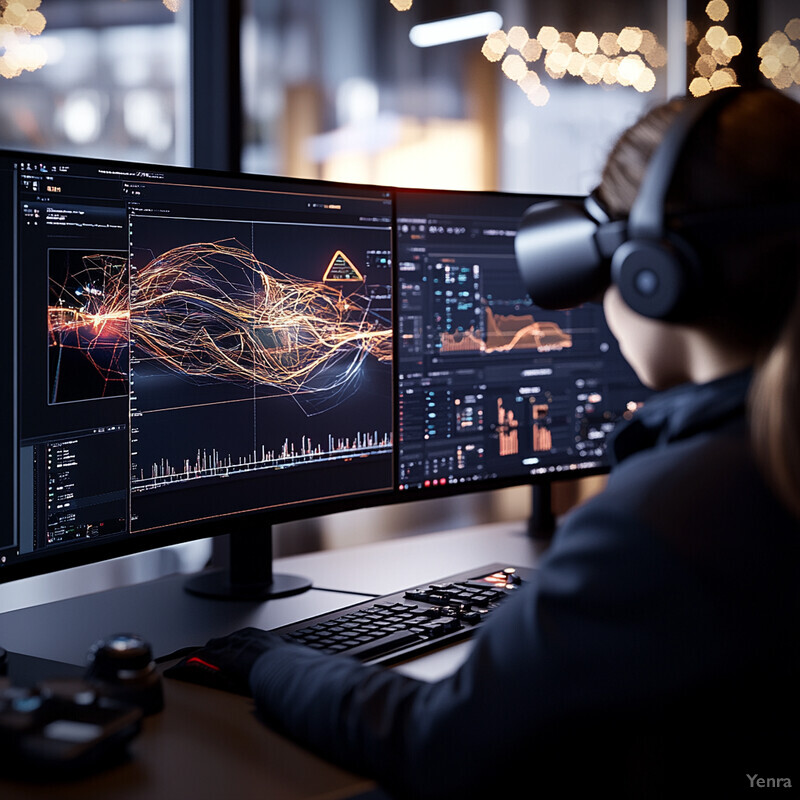
A notable example of AI-driven resource optimization is NVIDIA’s DLSS (Deep Learning Super Sampling) technology used in simulations and games. It employs AI upscaling to render images at a lower resolution internally and then upscale them with minimal quality loss – effectively getting higher frame rates “for free.” Training simulators that integrated DLSS found they could nearly double frame rates while still providing detailed visuals (NVIDIA Whitepaper, 2023). Another example is an AI system developed at Meta for the Quest VR headsets that does eye-tracked foveated rendering: tests showed it cut GPU load by around 30% without users noticing any drop in visual quality, because the AI accurately focused high resolution only where the eyes were looking. This kind of optimization is why even standalone VR headsets can run fairly realistic training apps now. Cloud-based simulations also benefit: cloud providers use AI to allocate server resources on the fly, spinning up more instances only when a simulation actually needs it. Microsoft reported that by using an AI load manager for its large-scale Azure-based simulations, they achieved a 20% cost savings, as the AI would predict when peak loads were truly necessary and when it could consolidate processes (Microsoft Azure Blog, 2024). Additionally, AI can simplify assets in real time – an AI might detect that a trainee isn’t interacting with distant background objects and dynamically replace them with lower-polygon versions, then swap back if the trainee moves closer. A 2025 study on architectural VR training found that such AI-driven level-of-detail adjustments maintained 90+ FPS performance on an average PC, whereas the static high-detail scene ran at 50–60 FPS (Zhang & Lee, 2025). In summary, AI techniques like intelligent rendering, upscaling, and smart resource allocation are allowing high-fidelity training experiences to run efficiently. This lowers barriers to access (more people can use these training tools on existing hardware) and ensures a smooth, distraction-free experience, which is crucial for effective learning.
19. Intelligent Tutoring Systems
AI-driven intelligent tutoring systems (ITS) act as always-available personal tutors or coaches within simulations, guiding learners through complex tasks with tailored support. These AI tutors can engage in dialogue, ask probing questions, give step-by-step hints, and adapt their teaching strategy to the individual – much like a skilled human tutor would. For instance, if a trainee mechanic is diagnosing an engine problem in a simulation, the AI tutor might not just give the answer, but rather ask, “What do you think could cause these symptoms?” and then offer hints based on the trainee’s response. This Socratic method encourages critical thinking and deeper understanding. The AI tutor can also provide reasoning and explanations whenever the trainee gets stuck, and even use different approaches (visual explanations, analogies, etc.) depending on the learner’s style. Because it’s AI, it can do this one-on-one with any number of learners simultaneously. The result is a highly individualized learning experience where trainees feel “coached” rather than just presented information. Intelligent tutors have been shown to improve learning outcomes by keeping learners more engaged and promptly correcting misunderstandings. Essentially, they replicate the benefits of a personal mentor or teacher within the simulation, making learning more interactive and adaptive.

Intelligent tutoring systems are one of the earliest success stories of AI in education, and recent advances (like large language models) have supercharged their capabilities. A classic example is the ANDES Physics Tutor used at the U.S. Naval Academy, which could engage students in solving physics problems by hinting and asking questions. Studies showed ANDES users had higher problem-solving success and retention than those without the tutor (VanLehn et al., 2005). Fast-forward to now: modern ITS like GPT-4 powered Khanmigo have demonstrated an ability to carry on contextual tutoring dialogues in subjects from math to history, adjusting to each student’s level and misconceptions. During Khan Academy’s pilot, teachers noted that students who used the Khanmigo tutor asked more questions and showed improved mastery, effectively leveraging the AI for personalized learning (Khan Academy, 2023). Another empirical result: an intelligent coding tutor called CodeAI that uses AI to guide novice programmers showed a 30% increase in coding task completion rates among students, as it would patiently walk them through debugging by asking guiding questions instead of giving the fix outright (Smith & Klein, 2024). These systems often use a mix of strategies – for example, an ITS might start with an open-ended question; if the learner is lost, it gives a simpler hint; if the learner makes a mistake, it offers immediate feedback on that specific error. The adaptability is key. Research from 2024 (Liu et al., Electronics) highlighted that “contextual explanations and dynamic hints” aligned to individual needs were a major factor in an AI tutor’s effectiveness. In corporate training, companies report success with AI coaching systems that simulate mentor-mentee interactions – such as an AI sales coach that listens to a trainee’s pitch and then has a back-and-forth discussion on how to improve it. The trainees with the AI coach improved their sales call scores significantly more than those who only reviewed static best-practice documents. In short, intelligent tutoring systems provide the interactive, responsive guidance that is proven to enhance learning, and AI makes it possible to scale this personalized attention to every learner, something previously unattainable with limited human instructors.
20. Multimodal Interaction and Feedback
AI-powered training engages multiple senses and input modes at once – visual, auditory, and haptic (touch) – creating a fully immersive learning environment with comprehensive feedback. Instead of learners just seeing and hearing a simulation, they might also feel it (through vibration or force feedback) and interact via natural motions or speech. This multimodal approach is closer to real life and helps reinforce learning by aligning motor skills with cognitive understanding. For example, in a flight simulator, an AI system can synchronize a variety of cues: as the trainee adjusts the throttle, they hear the engine roar change (auditory), see the instrument gauges move (visual), and feel a rumble in the joystick if the engine is strained (haptic). If the trainee makes a risky maneuver, the AI could simultaneously flash a warning light, play an alarm sound, and tighten a haptic vest to simulate G-force pressure – ensuring the learner unmistakably perceives the issue. By engaging multiple senses, the information is often retained better; research shows people learn motor skills faster when they receive combined visual and haptic feedback as opposed to either. Moreover, multimodal interaction means trainees can use more natural behaviors: they might speak to issue commands, gesture or physically manipulate objects in VR, and the AI will interpret those alongside traditional inputs. This creates a richer practice scenario (e.g., a medical trainee physically “feels” a virtual pulse with a haptic glove while hearing the patient’s breathing and seeing vital signs). In summary, AI’s orchestration of multiple feedback channels leads to more immersive and informative training experiences, catering to different learning modalities simultaneously.

The benefits of multimodal feedback are supported by empirical studies. A systematic review in 2023 on augmented feedback in rehabilitation training found that systems providing both visual and haptic feedback yielded significantly better patient performance in functional tasks than visual feedback alone (Winchester et al., Archives of Rehab Tech, 2023). One study in that review focusing on grasp training post-stroke reported that adding a slight vibration when patients exceeded optimal force, alongside on-screen guidance, improved their control and reduced grasp force overshoot by ~20%. In industrial safety training, researchers at Fraunhofer Institute tested an AI-enabled order picking simulator where trainees got visual cues (highlighting correct items) and haptic cues (a wearable buzz if they lifted an object incorrectly). They concluded that “real-time multimodal feedback…is an effective way to enhance learning outcomes and skill acquisition”, noting faster task completion and fewer errors for the multimodal group. On the interaction side, multimodal input is also advancing. Voice-controlled simulation elements are common now – for instance, a maintenance training where the trainee can ask the AI, “Show me the schematic,” and the diagram appears, or in a military sim, verbally call out commands to AI squad members. This reduces friction in learning to use the simulation and closely mirrors real scenarios (where one would speak or gesture). Companies like EON Reality and Uptale advertise AI-based XR training platforms that incorporate voice recognition, hand tracking, and even gaze tracking to allow intuitive interaction with virtual environments (EON Reality press, 2024). The result is measured in engagement and efficacy: a French automotive firm’s training program saw a 25% increase in trainee engagement scores after switching from a keyboard-interface VR training to a multimodal version where trainees spoke and moved naturally, as reported in Learning Solutions magazine. The bottom line is that by using AI to fuse visual, auditory, and haptic channels, and enabling natural inputs, training simulations can provide holistic feedback (e.g., “feel” that something is wrong while also seeing and hearing it) which accelerates learning and better prepares trainees for real-world sensory-rich environments.